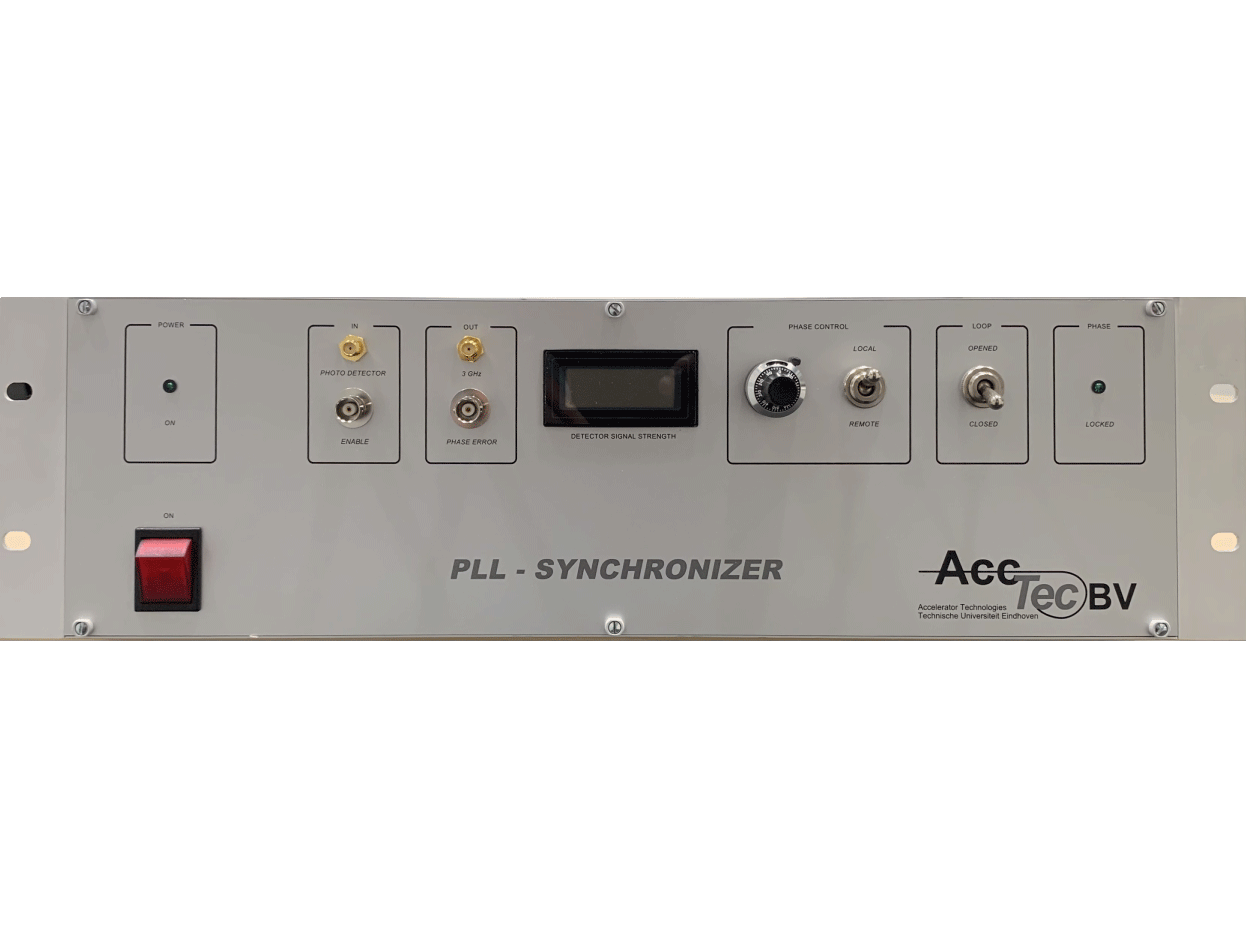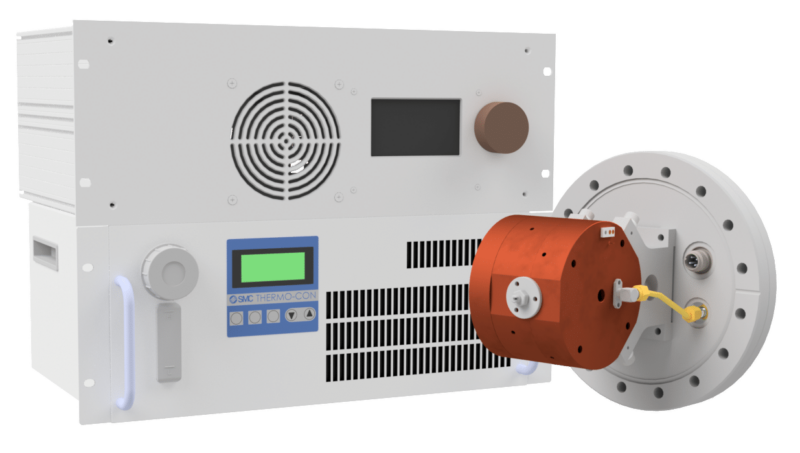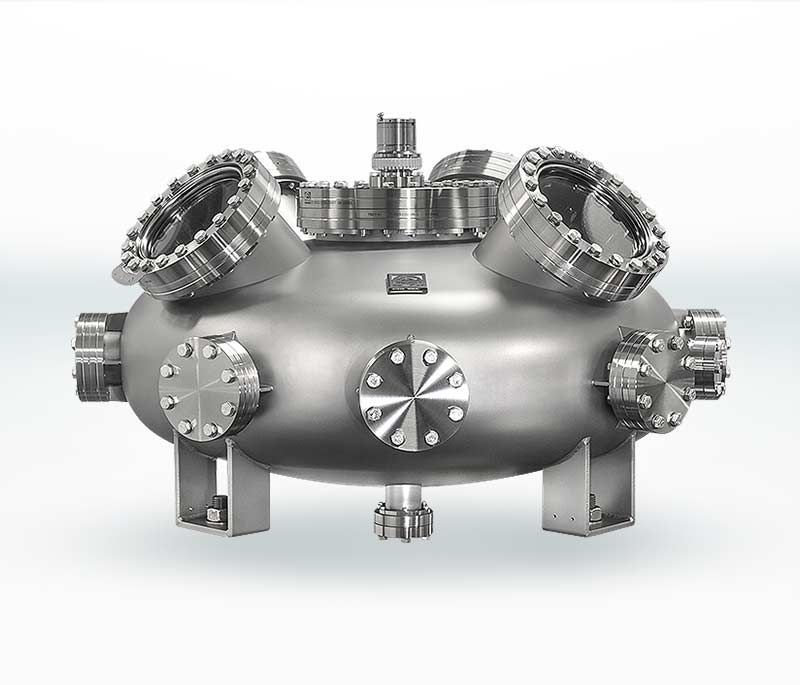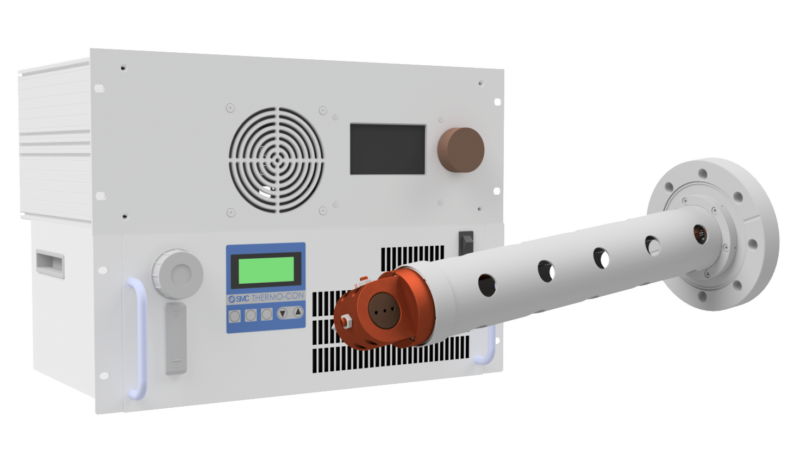Structural Dynamics Probe

The crystallography system enables single-shot ultrafast electron diffraction at 100 keV beam energy. To realize this, a ~1 μJ femtosecond 266 nm laser pulse is directed via the laser incoupler onto the cathode surface of the 100 keV DC electron gun. The generated 0.1-1 pC 100 keV electron bunch will expand rapidly in all directions due to Coulomb repulsion. The transverse expansion of the beam is stopped by the first solenoid, mounted directly on the exit of the 100 keV DC electron gun. To invert the longitudinal expansion the transversely collimated beam is sent through the compression cavity, which has its microwave phase locked to the femtosecond laser pulses using the synchronizer. For proper synchronization, the compression cavity has to be temperature controlled with a stability of 10-30 mK. The fields in the compression cavity are phase and amplitude stabilized using our RF Microwave driver. The combination of the compression cavity and a second solenoid magnetic lens allows the beam to be both focused transversely and compressed longitudinally onto the sample. After the sample the beam is detected by a electron detector. The overall length of the entire crystallography setup is approximately 1.5 m. We can deliver a complete system with a conditioned 100 keV DC electron gun and a stabilized compression cavity. Optionally, a 3 GHz deflection cavity on a translation stage can be added for pulse length diagnostics at the sample position. For more information about the crystallography system please consult our white paper or contact us.
FEATURES
- Femtosecond electron pulses
- High stability
- High reliability
- Active phase feedback
- Active amplitude feedback
- Pulse length diagnostics
SPECIFICATIONS
| Beam energy | Up to 100 keV |
| Bunch charge | 100 fC |
| spot size* | 250 μm rms |
| pulse length* | 100 fs rms |
| Beam emittance* | 30 nm rad |
| Coherence length* | 3 nm |
| Compressor - Sample distance | 300 mm** |
| * at sample for given bunch charge | |
| ** decreasing distance allows for shorter pulses |
This System Contains
Synchronizer
To enable 100 fs temporal resolution, the RF phase has to be synchronized to within 100 fs with the femtosecond laser, which can be done with our Synchronizer. The synchronizer is designed to synchronize a 3 GHz RF oscillator to a mode-locked 75 MHz Ti:Sapphire laser system with less than 100 fs phase jitter.
Photogun unit
In our 100 kV DC electron gun voltages up to 100 kV can be applied across a diode consisting of a flat copper cathode and a copper anode with a hole, which are separated by 1 cm. At 100 kV this results in a DC electric field of 12 MV/m on the cathode surface. Ultrashort electron bunches can be generated by photoemission with 266 nm femtosecond laser pulses, the 3rd harmonic of the 800 nm Ti-sapphire wavelength. The electron bunches are created by front illumination of a bulk copper cathode through the hole in the anode, using the laser incoupler component. Using front illumination of a bulk copper cathode, a 1 μJ 266 nm laser pulse is sufficient to generate a 1 pC electron bunch. Directly on the exit of the 100 kV DC electron gun a magnetic solenoid lens is mounted to collimate the electron bunch.
Compression unit
The compression unit consists of a RF cavity which is operated in the TM-010 mode. The cavity is driven by a 100W microwave driver that also contains a feedback system which stabilizes the phase and amplitude of the fields in the cavity. This is made possible by measuring the fields in the cavity by a pickup antenna. The unit also consists of a temperature controller which keeps the cavity at the desired frequency so that all applied RF power is absorbed.
Sample chamber
The compressed electron pulse interacts with the sample in the sample chamber. This chamber preferably has multiple ports for diagnostic tools to be inserted. Here one can think of a deflection cavity to measure pulse length of the compressed electron pulses at the position of the sample. Custom sample chambers are available on request. Please contact us for more information.
Deflection unit
The deflection unit consists of a RF cavity which operated in the TM110 mode. The cavity is driven by a 15 W microwave driver that also contains a feedback system which stabilizes the phase and amplitude of the fields in the cavity. This is made possible by a pickup antenna which measures the fields in the cavity. The unit is equipped with a temperature controller which keeps the cavity at the desired frequency so that all applied RF power is absorbed. The deflection cavity is a pillbox cavity partially filled with a dielectric material with a large permittivity ε and a small tanδ, which allows a substantial reduction in size and power consumption. The symmetry axis coincides with a hole through the dielectric material, allowing the passage of the electron beam. The deflection cavity unit can be used as an electron pulse length diagnostic tool by sweeping the electron pulse across a detection screen.
TimePix detector
To detect the electron bunch that is scattered by the sample we recommend a hybridy pixel camera such such as the TimePix3 from ASI. ASI is the world leader in hybrid pixel detectors and offers state-of-the-art camera systems based on Medipix and Timepix technology developed in collaboration with CERN. These cameras have a 2D array of smart pixels that can measure the energy of an incoming charge. The cameras can be custom built into many different experiments for multiple applications.







